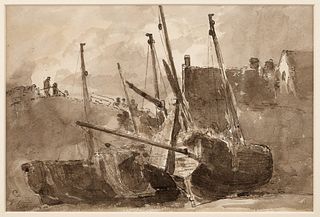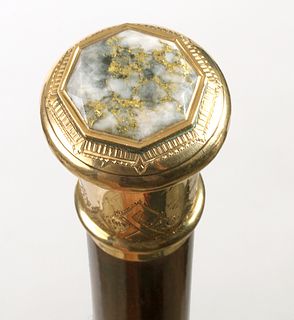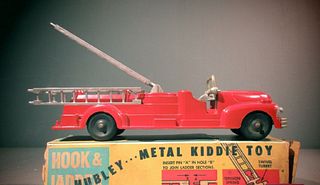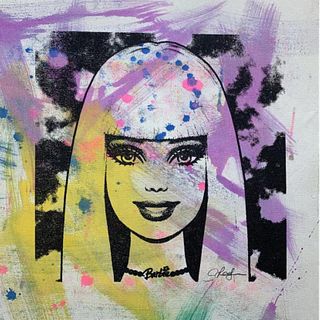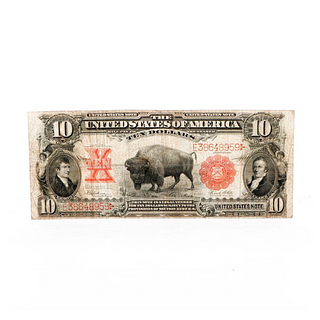Birds of a Feather
Martin Brothers bird-form vessels (oft referred to as “Wally Birds”) are, for most, aspirational items. Largely made to resemble leading political and industrial figures of their time and rendered in the manner of caricature pioneered by the 19th-century English satirical magazine Punch, these whimsical works were eagerly sought-after by London’s “chattering classes,” with commissions for their production coming from aristocrats including Lord Faringdon and Sir William Drake.
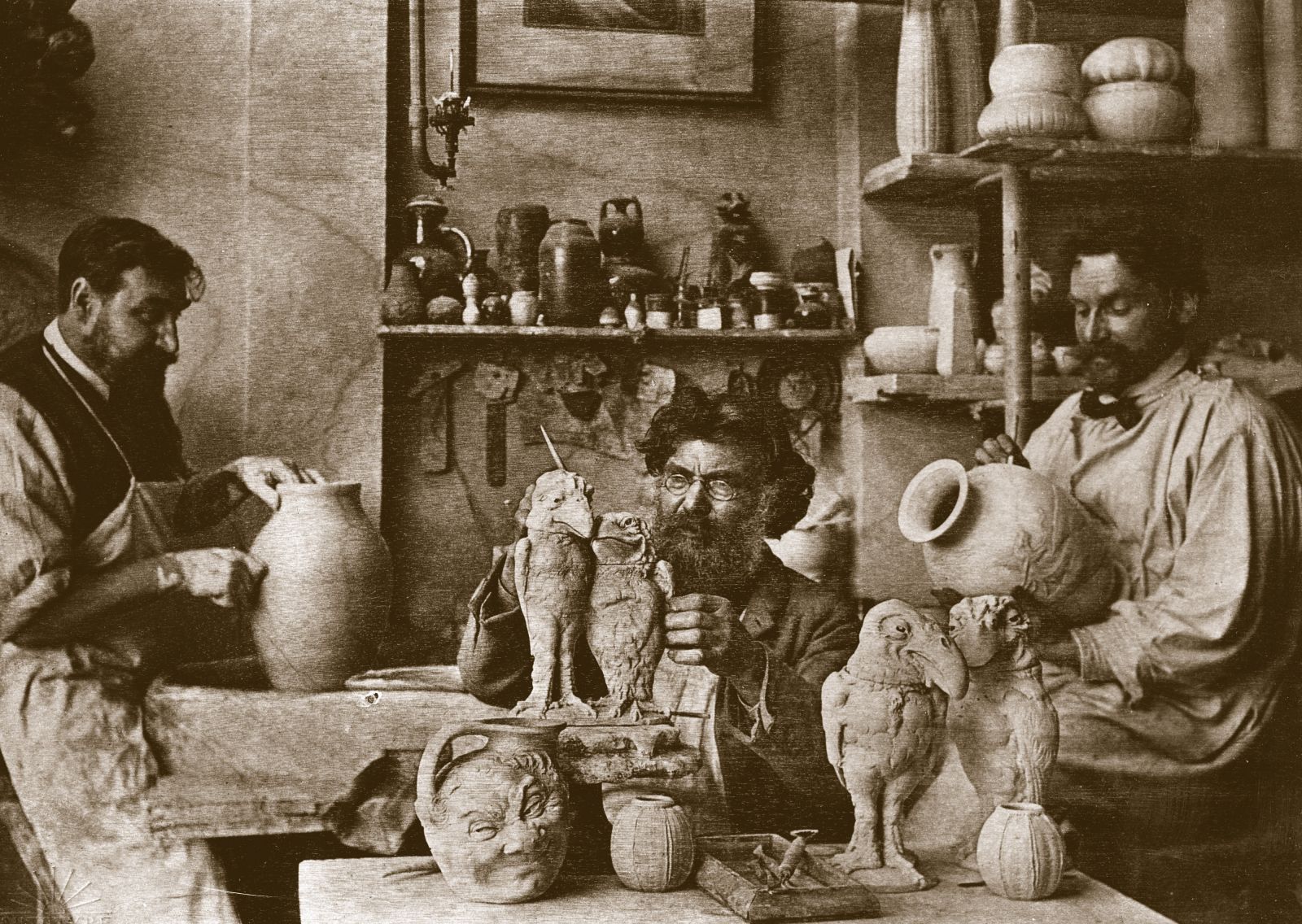
The Martin brothers in the studio at the Southall Pottery (b/w photo), English Photographer, (19th century) / Private Collection / Bridgeman Images
Robert Wallace Martin, the inspired artist behind the sculpting of the birds, began his career apprenticing with Charles Barry on the redesign of the Palace of Westminster, where he was known to have modeled grotesques. Thereafter, he rose to some acclaim while attending the Royal Academy, which led to such notable commissions as the Diamond Jubilee portrait medallion of Queen Victoria (intended for the entrance to London’s V&A Museum, Robert’s design was, to his immense dismay, never used).
Lot 7, Martin Brothers, Tall bird tobacco jar, England, 1899; Estimate $45,000-$65,000
The work of the Martin Brothers is as diverse as it is accomplished. From the formal sculpture present in their early plaques and busts to the grotesque and bizarrely expressive features of their Wally Birds and other creatures, their talent is unquestionable. Then as now, the Birds win the principal appeal. The first Wally Birds, crafted between the 1870s and 1880s, were immediately celebrated.
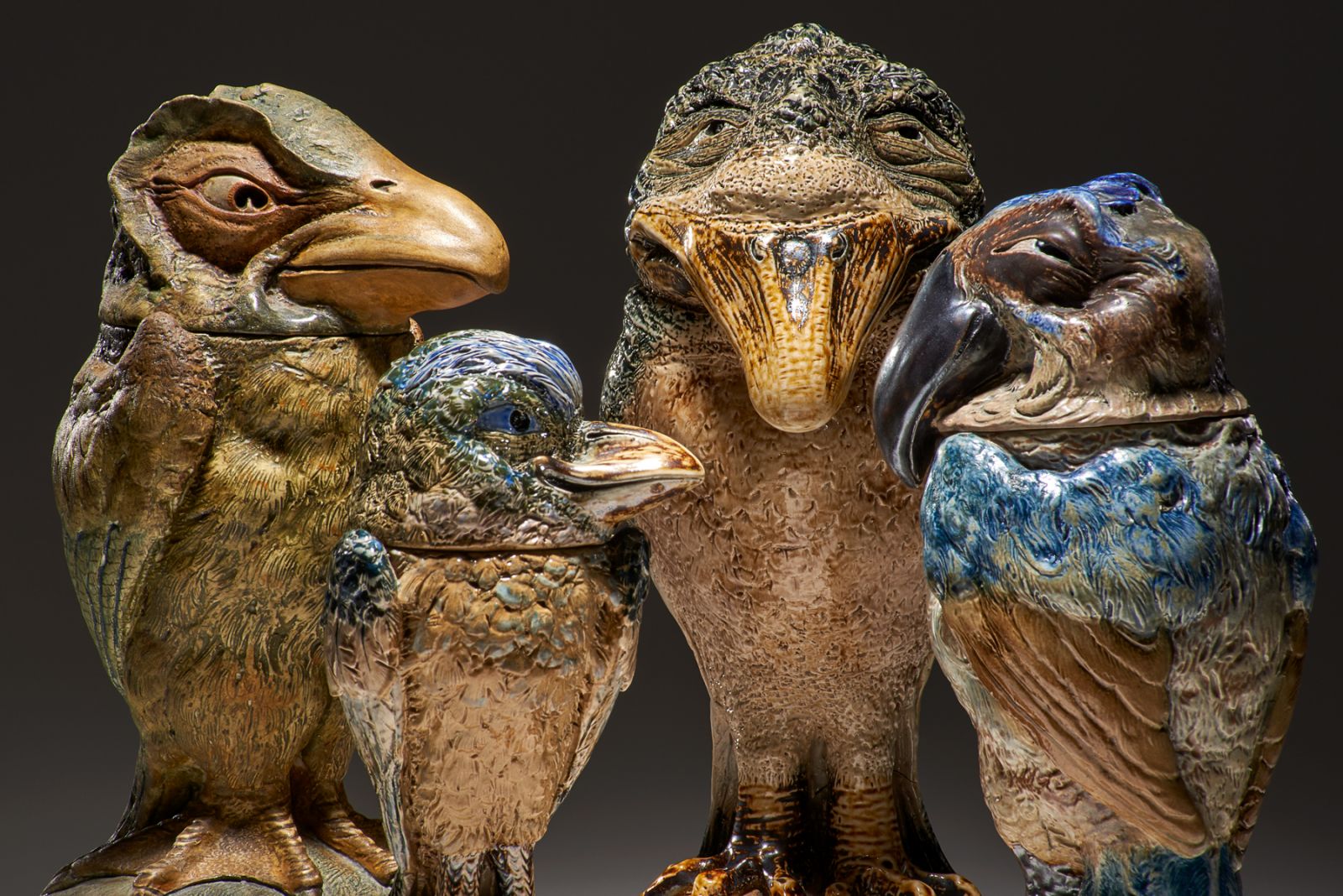
Robert Wallace’s mastery over the modeling of anthropomorphic features in caricature caught the imagination of audiences and media of the day. Charles Martin, who oversaw retail premises, was quick to encourage his brother to step up production of the birds to keep up with the demand.
Lot 19, Martin Brothers, Tall monk bird tobacco jar, England, 1899; Estimate $50,000-$75,000
Creative and commercial tensions often arose between the siblings. Robert Wallace, dedicated primarily to his artistry, continued to push Victorian boundaries with Birds increasingly fanciful and grotesque — which Charles repeatedly cautioned against. Robert Wallace also regularly abandoned profitable commercial production for extended periods to focus on the making of a massive ceramic fountain, a personal indulgence and private passion which ultimately never sold.

Lot 22, Martin Brothers, Tall and fine bird tobacco jar, England, 1900; Estimate $50,000-$75,000
It is the passion that links the artist and the collector. It is found in the creative drive, in the visions and fantasies that inspire the creation of objects, and in the compulsion to acquire and the restless pursuit of more. It is no simple thing to define the motivation that drives the collector, but for collectors of Robert Wallace Martin’s works, the need for insight into the inspiration of this prodigy sculptor and the ability to feel the imprint of the potter’s hands are among the prime components.
Lot 16, Martin Brothers, Tall bird tobacco jar, England, 1898; Estimate $45,000-$65,000
A world-class selection of Martin Brothers pottery from the collection of Andrew Furer and Elle Douglas will be sold at Rago on September 21. The special sale, comprised of more than 20 Wally Birds and an assortment of other rare works, is a near-encyclopedic exploration of the artist’s oeuvre.
View the full collection here: The collection of Andrew Furer and Elle Douglas
- Quilts as a 2025 Design Trend: A Celebration of American Heritage and Craftsmanship
- A Celebration of Sports History and Collectibles
- Antiques and the Arts Weekly Q&A: Allis Ghim
- The Thrill of Sports Memorabilia Auctions: A Collector’s Paradise
- Demystifying Coin Condition: A Guide to the Sheldon Grading Scale
- Snoopy & Friends: A “Peanuts” Auction at Revere
- Colorful Chinese Monochromes at Millea Bros
- 12 Holiday Gifts for the “Impossible to Buy For” on Bidsquare
- Alluring Art Objects and Accessories from the Estate of Chara Schreyer
- Kimball Sterling's One-Owner Outsider and Folk Art Collection Showcases Masters of the Unconventional



 EUR
EUR CAD
CAD AUD
AUD GBP
GBP MXN
MXN HKD
HKD CNY
CNY MYR
MYR SEK
SEK SGD
SGD CHF
CHF THB
THB





